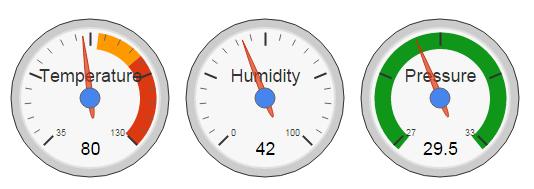Now that my ESP8266 controlled sensors have been on-line and are now reliably running, the next step was to push some of the data up to ThingSpeak. Up to now, I had been saving the readings exclusively in my host server account’s mySQL database.
And now the temperature readings are also pushed up to ThingSpeak, once every hour.
But not by the ESP8266 micro-controller. No…I have discovered that the stability of the ESP8266, at least at this time, is linked to the frequency of accessing it through http client GET requests. Access to my ESP8266 is tightly controlled. It has to be. I’ve written about structuring a stable ESP8266 Arduino IDE sketch loop() in another post. This may be helpful if you are have issues with the ESP8266 reliability.
The video created to describe the ThinkSpeak channel breaks down the unique methodology I’ve used to move sensor readings up to ThingSpeak.
You can check out the real-time data now visually served to the world on my new ThingSpeak channel. I’m hoping there is something unique about the method used to upload the readings and the eye-catching displays that could be of value to someone. Something not found on any other of the many channels displaying similar data.
Setting up the channel was easy. ThingSpeak is a free platform serving first as a repository database, like mySQL, to store data read from your Internet of Things (IoT) gadgets.
Once you have a periodic data feed to ThingSpeak, the platform can execute actions based on the data. It also provides a simple API to take some of the burden off your micro-controller. Here’s highlights of what ThingSpeak can do for you:
- ThingTweet – This service provides a simple API for your IoT thing to post Twitter messages.
-
ThingHTTP – Let’s you retrieve data stored in ThingSpeak with HTTP GET request.
-
TweetControl- Now this is really cool. This API allows you to control your IoT device by posting a Tweet. ThingSpeak does this listening for the hashtag you assign as the trigger. When receive, ThingSpeak sends your command to the device using ThingHTTP.
- React -Performs whatever action you need when the data in your channel meets your custom set condition. Some obvious examples:
- Turn light on when proximity sensor detects someone in room
- Water lawn when moisture detector reaches dry threshold.
- Turn heater on when temperature drops below certain reading.
- TalkBack – API that has device execute queued commands. The queue is loaded in ThingSpeak. Then the device request a command, and performs an action based on the command it gets from the ThingSpeak queue. I have not thought of an application for this yet, but I’m sure you might find some from ThingSpeak.
- TimeControl – Allows you to setup ThingHTTP or ThingTweet requests a a predetermined time. There are many ways to do this, but using ThingSpeak could reduce the burden placed on your device or other element in your IoT ecosystem.
That’s it for now. Keep your creative juices flowing. I may add my humidity and barometric pressure readings to the initial ThingSpeak soon – in a 3-gauge display window. Like you see above. Being in the US, my temperature is in Fahrenheit and the pressure is inches of mercury. What will you do next?
I hope you find this information useful…
![]()
